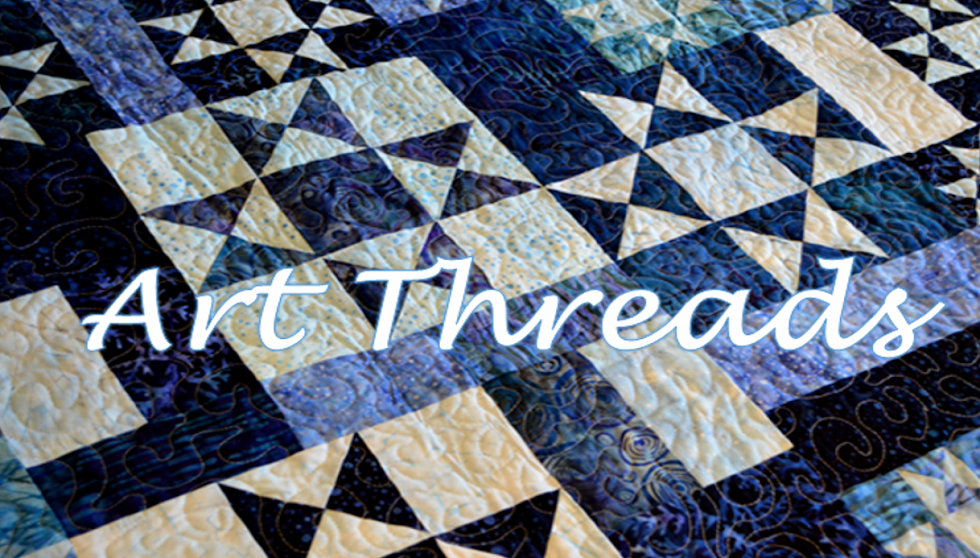When we used stencils to decorate fabric on Monday, we used a method that has been around since pre-historic days. Stenciled hands are found at cave art sites around the world, including this one in Chauvet Cave in France from approximately 30,000 years ago. The artist most likely mixed pigments, such as ocher, with saliva (in the mouth!) and sprayed it through a hollow plant stem or bone around the hand.
It's hard to tell when people began decorating fabric in this way. Anything used for fabric through most of history is organic and rots, leaving no record. We do know that simple stencils are used around the world to apply vegetable dyes or mud to fabric - this is most likely an very old tradition. Stenciling in this way is still used to produce barkcloth and mudcloth.
Mudcloth was traditionally made with a type of bark-cloth made from different shrubs, including mulberry, in parts of Africa. Today, many types of cloth are used. In the photo below, a bleaching material is being applied to a mud dyed fabric using a stencil. Pastes of vegetables dyes and/or mud are also used. Today's opening photo is a mudcloth piece I own that was made in Burkina Faso.
The Pacific Ocean islands people also have a barkcloth/stenciling tradition known by different names, such as tapa, masi, or kapa, depending on the island. The patterns have names and symbolic meanings and range from simple designs to quite complicated ones.
 |
| copyright Museum of Victoria Australia |
I'm currently working on a stenciled tablecloth using barkcloth designs as inspiration.
For those interested in seeing more, the Museum of Victoria Australia and the Museum of New Zealand have extensive barkcloth collections online.





wow, stumbled upon your article whilst searching for fabric prints, strangely enough I am of pacific island descent and have a tonne of tapa under my bed. :) I love your tablecloth
ReplyDeleteThere is marvelous interactive website that shows the mudcloth process - google Discovering Mudcloth. My students loved it and it was a good introduction to our unit on printmaking!
ReplyDelete